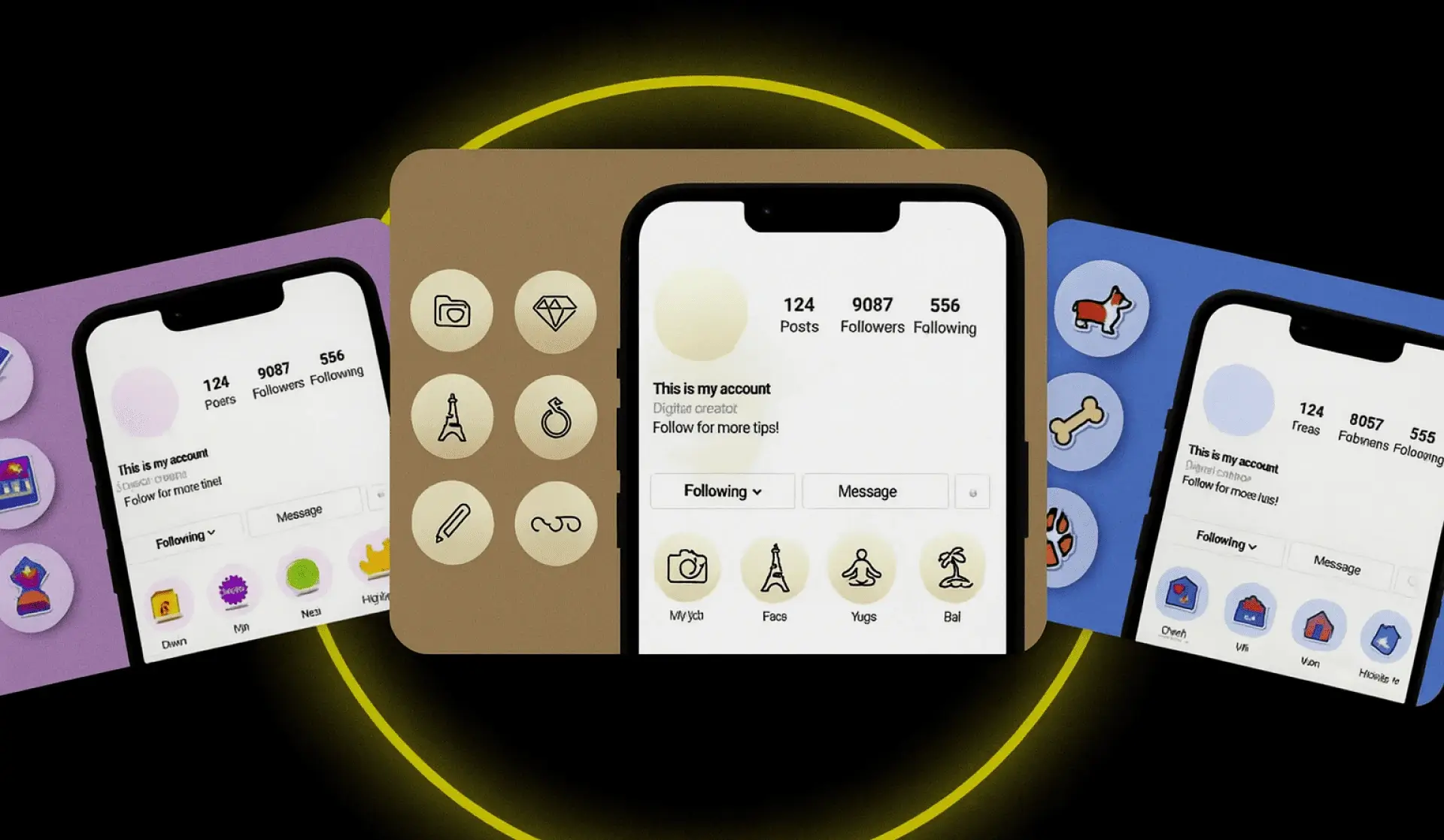
On Instagram, “timeless stories” are becoming a powerful tool for managing the user experience. Properly designed collections help guide visitors from the first touch to the application — without unnecessary clicks and searches on the feed. Below is a compact guide to the structure, design and updating of sections, taking into account business objectives. According to case studies by SMM practitioners, short videos and story formats are 1.5 times more clickable than classic posts, and well-designed highlights reduce support load by covering frequently asked questions. Let's figure out what Instagram highlight is in the context of a brand and how to get the most out of this format.
An account is a mini-site, and highlights act as menus and quick sections. They distribute important information across “shelves”, keep managers focused and save time. For online stores and service companies, this means fewer repetitive questions and more targeted conversions. Add to that relevant contact details and quick answers, and the funnel gets shorter. Below are key business scenarios and how to implement them.
Highlight is a quick way to About Us, order conditions, shipping and returns, and a case showcase. Reinforced customer feedback and UGC remove barriers and increase trust. In CRM systems, you'll see fewer “repeat” calls if the highlights contain structured rules and answers. Visibility is important for b2c: show the product in action, before/after, FAQ and real reviews — all in one or two taps.
Highlights are a way to save stories that have worked but haven't lost value: instructions, price curtains, guides, useful tips. The algorithm promotes deep navigation profiles: people stay logged in longer, review stories, and share links. Regular updates of sections hold positions and reduce the “rebound”.

Before designing, determine the roles of the sections: acquaintance, warm-up, conversion. Write the content into mini-episodes so that the user follows the logic of “found out → understood the benefits → saw evidence → transfer/wrote”. Save only what helps you make a decision or remove an objection. For Instagram highlights, it's useful to keep the content pool in a table: topic, goal, metric, update date.
Select stories that cover frequently asked questions and move you to action. Group by goals (acquaintance, product, social proof, conditions) and by segment (beginners, warm group of people, customers). Create separate builds for different areas: training, promotions, answers. This increases conversion rates and makes it easier to navigate.
First of all, we save:
This approach increases conversion rates and makes it easier for the audience to navigate.
Each story is a microscript of 3-5 slides with a CTA. Keep the same template for text and calls to keep the highlights looking solid. This speeds up production and improves readability. Hints can be stored in notes or Notion.
Highlight story tips template:
A single template for text and calls speeds up the production of stories and increases their readability.

Start with a frame of 4-5 sections: this is enough to give the full picture without overloading. Remember that adding a new story moves the section forward — consider this logically. Thematic playlists are appropriate for large-scale accounts: product lines, events, useful collections. This structure reduces the path to an answer in two to three tapas.
For most niches, the basic set is the same. Form a “skeleton” and then expand the sections in depth. This simple rule provides a predictable path for new visitors.
Category base for highlights for Instagram:
This basic “skeleton” can be expanded in detail, which provides an intended path for new visitors.
Post “About Us” first, followed by the catalog/services, then reviews and conditions. At the end — FAQ and contacts. Use product tags and links to the website/mobile app: a link to a product card shortens the path to purchase. Don't forget about UTM — this way you'll understand the contribution of sections to conversions.
The visual system should be recognizable: corporate colors, readable fonts, concise icons. The cover size is 1080×1920 px; the key object is in the center, without being overloaded with small details. The names are short and clear, up to 10 characters in the visible part. The same style makes highlights part of the identity and increases recognition when reposting.
Design is about functionality. Dark icons on a light background and vice versa. Try to make the covers readable even on smaller screens. Check the contrast and avoid abbreviations that are incomprehensible out of context.
Registration checklist:
This approach ensures readability of covers even on small screens and maintains high contrast.

It is better to sign Highlights with the words “Reviews”, “Catalog”, “Rules”, “FAQ” than “REV”, “CAT”, etc. Short titles are read faster and increase the CTR of conversions. If you need to fit a long thought, use an emoji hint and a clear word: “🚚 Delivery”, “⭐ Reviews”.
Highlights are a “live” section. Conduct an audit every 8—12 weeks: remove outdated promotions, add new cases and Q&A. During active launches, update more often so as not to lose relevance. Remember that Instagram highlights work like FAQs: freshness increases trust and reduces calls to direct/chat bots.
Create a calendar of updates and a checklist by section. This disciplines the team and makes it easier to delegate. Keep the same templates for online accounts so that quality does not “float” between managers.
What to check during an audit:
Keeping a calendar of updates and a checklist by section disciplines the team and ensures consistent content quality.
Evaluate the contribution of sections to audience behavior: views, retention, clicks on sticker links, direct clicks, requests marked from stories. For highlights on Instagram, it's convenient to track UTM tags and compare which collections have the most impact on conversions. If you see a failure after slide 2-3, strengthen the hook and add social proof earlier.
Submit a request, our head of analytics will contact you and show you how we will achieve results for your business